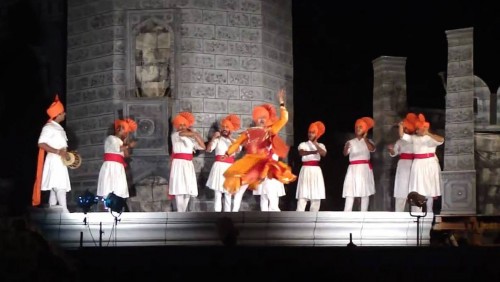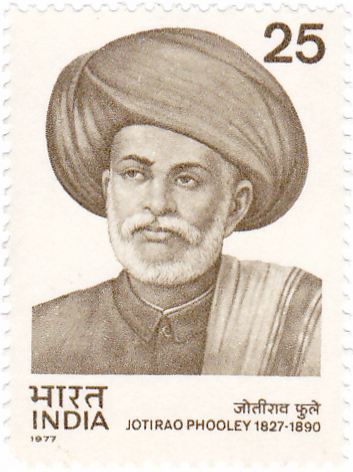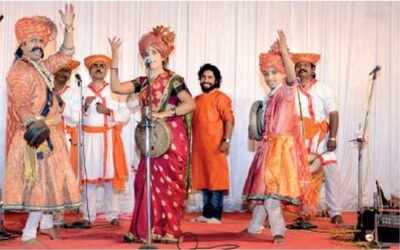Introduction: A Glance into Powada

In the cultural tapestries of Maharashtra, music and ballads seem to occupy an abundant position in the state’s artistic traditions. Powada is one of the brightest jewels in the crown of traditional Indian theatre practices, incorporating dances like Lavani and intricate storytelling. Originally, it was a Dalit art form of the Gondhal community; it became widespread during Shivaji Maharaj’s period, and later Peshwas also patronised this art form. The word Powada finds its etymological roots in the Marathi language, wherein Powada signifies a ballad or an eulogy. It also signifies glorification and goes back 750 years ago kept alive today by a few artists.

According to Ashok Ranade, Powada is based in music but not exclusively musical in its characteristics—it has constant symbiosis with musical poetry and dances. Powadas were not just an isolated art form; they were utilised to celebrate the victories of Chhatrapati Shivaji and Tanaji Malusare. Powadas were sung to inculcate awareness around the ‘tabooed’ themes of female foeticide, dowry, and corruption. Each paragraph in the Powada is referred to as ‘Chouk.’ The singer of the Powada assumes the characters onto oneself. One narrates the story through both prose and poetry. Through various hand gestures and actions, imagery is created in the minds of viewers flawlessly.
Historical Roots of Powada Ballads
This oral performative ballad traces its earliest evidence to the seventeenth-century reign of Chhatrapati Shivaji Maharaj, reciting Shivaji’s brave and valorous ventures and exploits. The inceptional Powada is Afzal Khanacha Vadh, which was performed in 1659 and seamlessly portrays Shivaji’s courageous killing of Afzal Khan as a remarkable act of bravery and military strategy. Following this, numerous powadas were created to instill thrill among the listeners and watchers to celebrate victory or tales of battles with North Indian Mughal rulers or other ‘enemy’ camps. Prachi Deshpande notes how the mobile performances of these powadas and their dissemination in rural, local areas underscored a pivotal role to preserve these traditions as a collective memory.

After the rule of Peshwas reached its climax and British colonialism dawned in the Indian subcontinent, the nationalist leaders and several inhabitants of Maharashtra utilised the powada as a tool of driving anti-imperialist sentiment. This elite perception of freedom was not enough for people like Mahatma Phule, who wanted to construct a reality with the grassroot masses by using the powada. By employing the theatre tradition in a rejuvenated format as a satire, Phule radically questioned and challenged British dominance in India. In the 1950s, performers like Amar Sheikh and Annabhau Sathe, of the Communist Party of India, employed the powada to challenge and critique the government’s policies. This non-conformist employment of powadas continued in the post-independence framework poignantly as we observe that in the 1980s, artists affiliated to Ambedkarite ideology and Dalits led protests against suppression, paving the way for shahirs like Sambhaji Bhagat, who stands out as a prominent contemporary who composes powadas as a tool against the caste system and much more.
Phule: Caste Subversion via Powada

Jyotiba Phule, a leading non-conformist against casteism from Maharashtra, sought to employ Powada in a magnificent, anti-caste fueled way. He did not just focus on simple homogenised Indian identity, but critiqued Brahmin and British hegemonies alike. Phule’s powada on Shivaji Maharaj ‘Chhatrapati Shivaji Raje Bosale yancha Powada’ narrated heroic tales on the ruler but also portrayed him as a Shudra protector of his people, applying deep-rooted caste stigma of Maharashtra via his narrative. In ‘Brahmananche Kasab’ (Priestcraft Exposed), Phule showcases a utopian pre-Aryan society of India ruled by folk king Baliraja and its demolition of Aryan forces.

In another work, ‘Vidyakhatyateel Brahman Pantoji’ (Brahmin Teachers in Education Department), Phule concentrates on modern educational institutions and the horrendous casteist circumstances present within them. The powada begins with ‘low-caste’ parents being impoverished and sad over their child’s inability to go to school and get educated, in contrast with the indifference of the Brahmin teacher and the village higher castes who play a role in expelling the ‘Untouchable’ Mahar child, yet are enthusiastic to ‘shake hands with the English’ reflecting the two bipolar dimensions of society. In this powada, Phule showcases how Brahmins, despite planning rebellions against the British, avoid Shudra-Ati Shudra communities. He casts a parallel light between the abolitionist government of North America and the Indian caste system, bridging a similarity between slavery and casteism.
Subaltern and nationalist historiographies have neglected Phule’s extensive contribution (through powadas) in the realm of lower castes and the creation of a non-Brahmin identity. This is because of his soft stance towards British rule in India; however, it is necessary to take note of the fact that Phule saw colonial administration’s so-called secular approach as a pleasant alternative to the oppression he and his fellows were facing.
Structural Intricacies of Powada

Powada is a form of ‘outdoor music’ that is, sung in open, and so, eloquent and high-pitched pronunciations of consonants become important. Interestingly, when you read a Powada text on paper, the words often look distorted or ungrammatical. But when sung, the tune makes these distortions feel natural, and they become part of the performance’s sound structure. Unlike classical music, Powada is free from rasa or emotional intensity, whether singing Sawai Madhavrao Peshwa’s festival, or the Battle of Kharda or the heroic Death of Tanaji, it is fast, repetitive, and focused on the point. Ranade describes that Powada is not just about history and heroic tales, but meter, rhythms, and details of music too.
Conclusion: A Bright Future?
In the history of the Marathas, there were about 300 powadas. Ballad keepers of the powada have kept written and oral records of their traditions. This theatrical musical practice, according to V.K. Rajwade, is “an authentic source of Maratha history.” The Shahirs or poets who honoured the art form through generations live in legacies of Powade.com, which was started by Dr. Prabhakar P. Jamkhedkar to keep this oral tradition of Maharashtra alive. Shahir Hemant Mawale describes how it is his life’s ambition to keep powadas alive through his organisation, Shahir Hinge Lokkala Prabodhini. These oral ballads are not only crucial historical sources and fascinating pieces of tradition, but also reflect an active legacy for the practitioners.
References:
Mokashi-Punekar, R. (2023). The Powada in Marathi literary and performative tradition. Orient Blackswan. https://thebookpointindia.com/media/978-93-5442-380-2_BookReview3.pdf
Shahir Adnyandas, Tulsidas, & Shahir Yamaji. (n.d.). RISE OF THRILLING ENTERTAINMENT IN MAHARASHTRA. In RISE OF THRILLING ENTERTAINMENT IN MAHARASHTRA. http://ir.unishivaji.ac.in:8080/jspui/bitstream/123456789/2649/6/06_Chapter%203.pdf
Ranade, A. & DR ASHOK DA RANADE MEMORIAL TRUST. (1978). The Powada. In Sterling Publishers Pvt. Ltd., Lesser Known Forms of Performing Arts in India. Sterling Publishers Pvt. Ltd. https://ashokdaranade.org/wp-content/uploads/2021/01/1978-01-The-Powada.pdf
IndiaNetzone. (2023, August 1). Powada: The rich heritage of Maharashtra’s folk theatre. Indian Encyclopedia. https://indianetzone.wordpress.com/2023/08/01/powada-the-rich-heritage-of-maharashtras-folk-theatre/
Chatterjee, A. (2018, September 9). Packing power into a Powada. The Times of India. https://timesofindia.indiatimes.com/city/pune/packing-power-into-a-powada/articleshow/65739690.cms
Powade – powade. (n.d.). https://powade.com/




